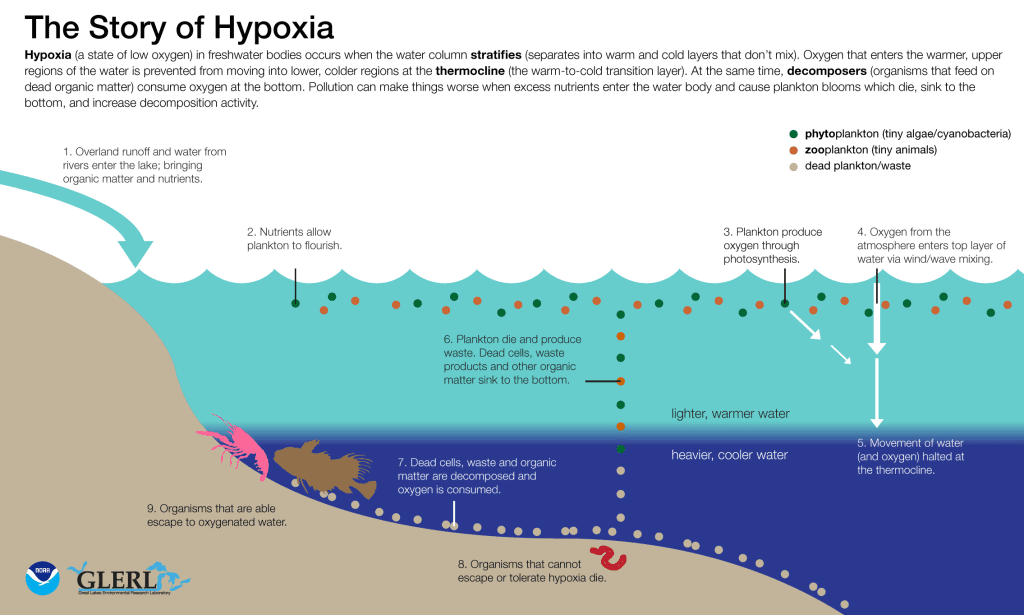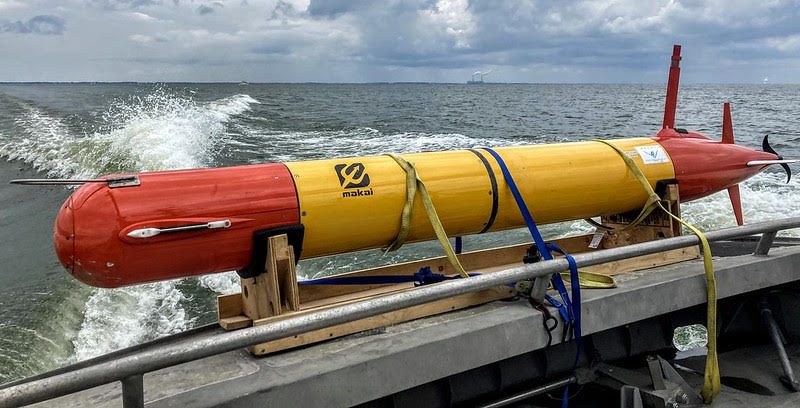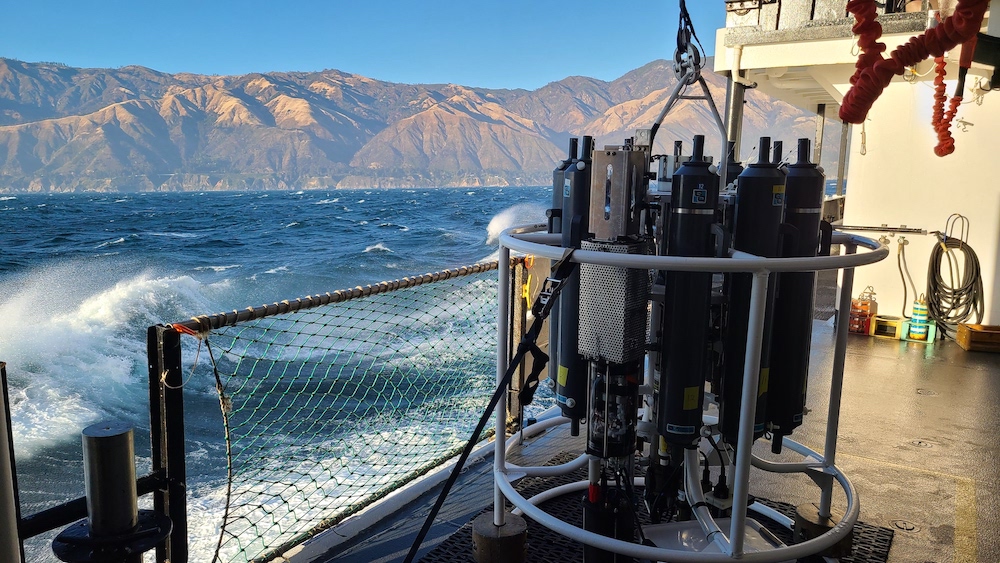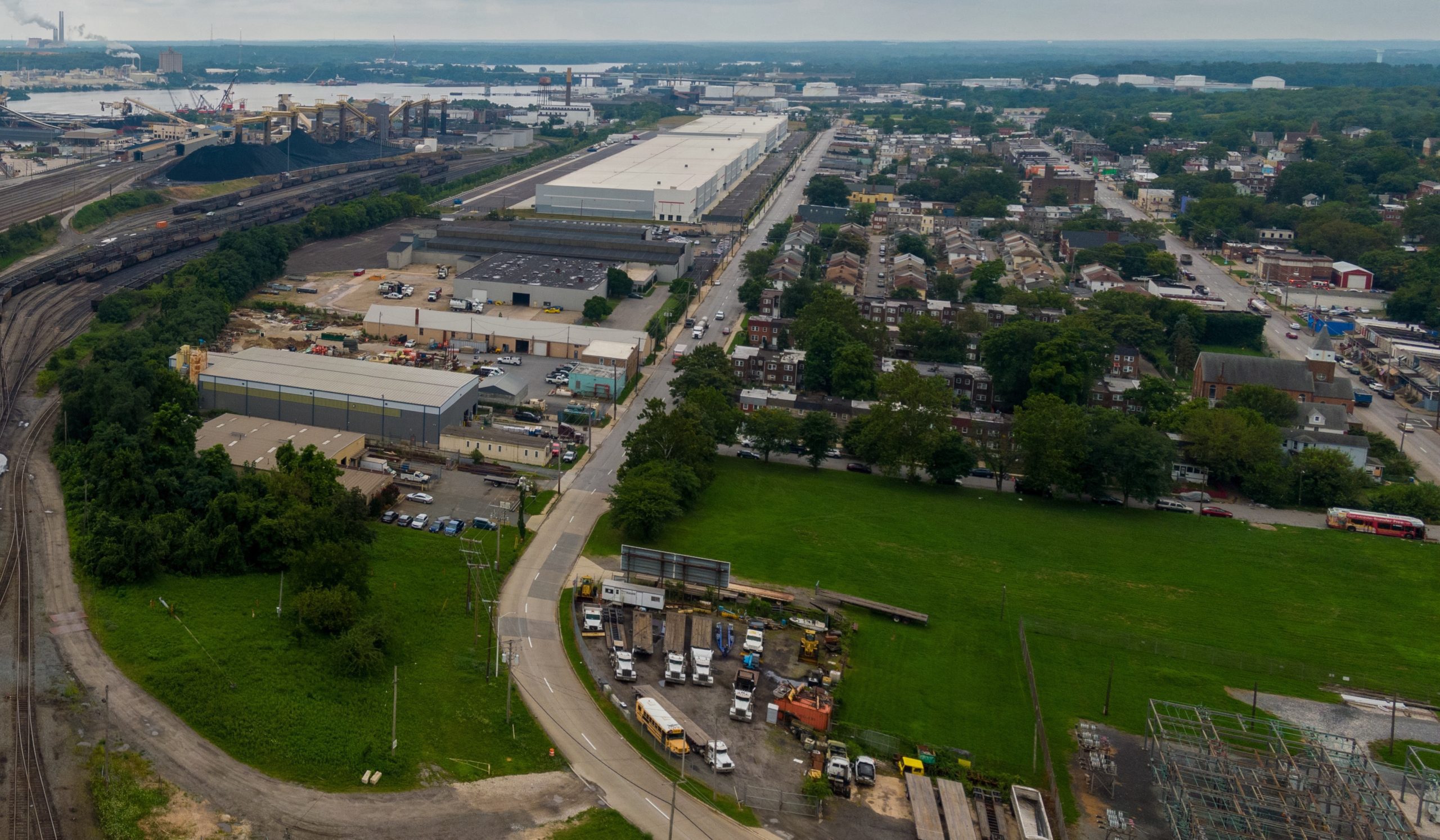NOAA’s Lake Erie Hypoxia forecast is now fully operational
In the early 2000s, scientists from NOAA’s Great Lakes Environmental Research Laboratory (GLERL) teamed up with Canadian researchers to deploy buoys with sensors to monitor the presence of offshore hypoxic zones – areas of the lake with very little dissolved oxygen – in Lake Erie. This effort became the foundation for a new area of research at GLERL, one that has ultimately led to an innovative tool to help drinking water plant managers maintain clean drinking water for millions of people. In July 2024, GLERL and partners announced that the tool, known as the Lake Erie Hypoxia Forecast, became fully operational and is now available to water plant managers in the region.
Lake Erie’s central basin is a vital drinking water source for over two million people along the Ohio coast, but drinking water treatment plants in this region face significant challenges during the summer. The lake water stratifies, creating a distinct separation between warm surface water and cold, dense bottom water. The deep water often becomes hypoxic (low in dissolved oxygen) and has a low pH and elevated levels of iron and manganese.
Strong wind events can cause upwelling, bringing this cold, hypoxic bottom water to the surface near the lakeshore. Because low pH and elevated manganese in hypoxic water interferes with the standard treatment of drinking water, if an upwelling of hypoxia reaches a drinking water intake, the treatment process needs to be adjusted to maintain drinking water standards. Incorrect treatment can lead to pipe corrosion, unpleasant taste, bad odor, and discoloration of the water.
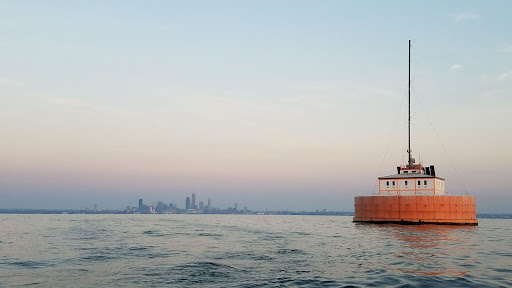
From 2017-2021, NOAA GLERL and the Cooperative Institute for Great Lakes Research began developing an experimental Lake Erie hypoxia forecast under a project funded by the NOAA National Centers for Coastal Ocean Science (NCCOS) Coastal Hypoxia Research Program. The experimental forecast became publicly available on NOAA GLERL’s website in 2018, and was used by public water systems serving more than two million people. In addition to keeping drinking water safe, the forecast became an unexpectedly vital tool for managing Lake Erie’s fisheries.
The partnership between NOAA GLERL researchers and Cleveland Water plant managers has had a significant impact on the operations at Cleveland Water, allowing the treatment managers to understand the impacts of hypoxic water, to see the conditions of the water in real-time, and to treat the water appropriately and in a timely manner.
“Cleveland Water and NOAA’s partnership spans over 15 years. We have worked with NOAA to aid our understanding of the development of hypoxia and the indicators of hypoxic events,” says Maggie Rodgers, Cleveland Water Plant Manager. “We monitor NOAA GLERL’s Lake Erie Hypoxia Forecast daily. Early warnings of hypoxic events are extremely useful for our water treatment processes. With advance warning, we can prepare to take the appropriate measures to mitigate the potential impact of a hypoxic event.”
A research to operations success story
NOAA GLERL produced the experimental Lake Erie Hypoxia Forecast each summer from 2018 through 2023, and this year the forecast is now being officially transitioned to NOAA NCCOS for sustained operations.
The now-operational hypoxia forecast model is an exciting and impactful outcome of the past two decades of GLERL’s hypoxia research. Integrated with a real-time, fine-scale hydrodynamic model, the forecast provides advance warnings of lake circulation events that are likely to affect water quality at drinking water intakes. The model also simulates exchange of oxygen with the atmosphere, three dimensional transport of oxygen, and consumption of oxygen in the water column and by the sediment.
This comprehensive approach offers real-time, actionable insights by providing timely warnings of conditions that may cause upwelling events. The hypoxia forecast model helps local decision-makers manage water treatment more effectively, preventing the adverse effects of improper treatment. This ensures the delivery of safe, high-quality drinking water, reduces maintenance costs, and protects public health.
The newly operational model was based on the Lake Erie Operational Forecast System, further enhancing the region’s capability to manage water quality. For more information and to access the hypoxia forecast, click here.
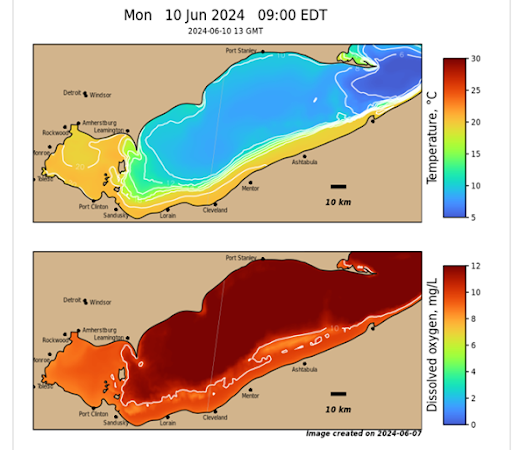

Credit: NOAA
NOAA GLERL’s partners on this research include NOAA NCCOS, the Cooperative Institute for Great Lakes Research, the U.S. Geological Survey, the City of Cleveland Division of Water, and Purdue University. Most realtime buoy observations on forecast graphics are maintained by LimnoTech. These partnerships have been instrumental in bringing the forecast from concept to reality.
“This project gave me a new appreciation for the challenging work that drinking water plant managers do,” said Mark Rowe, a Research Physical Scientist at GLERL. “This forecast will hopefully give them the time they need to ensure that staff are prepared to respond with equipment and supplies on standby. I hope the forecast makes their job a little easier.”
Media contact: Alison Gillespie, 202-713-6644, alison.gillespie@noaa.gov
